The following is a full text of U.S. Supreme Court Justice Neil Gorsuch’s concurring opinion in ROMAN 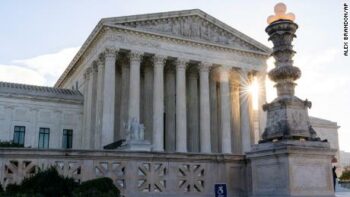 CATHOLIC DIOCESE OF BROOKLYN, NEW YORK v. ANDREW M. CUOMO, GOVERNOR OF NEW YORK, in which the court struck down the governor’s Covid restrictions targeting church services
CATHOLIC DIOCESE OF BROOKLYN, NEW YORK v. ANDREW M. CUOMO, GOVERNOR OF NEW YORK, in which the court struck down the governor’s Covid restrictions targeting church services
Government is not free to disregard the First Amendment in times of crisis. At a minimum, that Amendment prohibits government officials from treating religious exercises worse than comparable secular activities, unless they are pursuing a compelling interest and using the least restrictive means available. See Church of Lukumi Babalu Aye, Inc. v. Hialeah, 508 U. S. 520, 546 (1993). Yet recently, during the COVID pandemic, certain States seem to have ignored these long-settled principles.
Today’s case supplies just the latest example. New York’s Governor has asserted the power to assign different color codes to different parts of the State and govern each by executive decree. In “red zones,” houses of worship are all but closed—limited to a maximum of 10 people. In the Orthodox Jewish community that limit might operate to exclude all women, considering 10 men are necessary to establish a minyan, or a quorum.
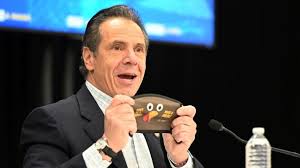
In “orange zones,” it’s not much different. Churches and synagogues are limited to a maximum of 25 people. These restrictions apply even to the largest cathedrals and synagogues, which ordinarily hold hundreds. And the restrictions apply no matter the precautions taken, including social distancing, wearing masks, leaving doors and windows open, forgoing singing, and disinfecting spaces between services.
At the same time, the Governor has chosen to impose no capacity restrictions on certain businesses he considers “essential.” And it turns out the businesses the Governor considers essential include hardware stores, acupuncturists, and liquor stores. Bicycle repair shops, certain signage companies, accountants, lawyers, and insurance agents are all essential too. So, at least according to the Governor, it may be unsafe to go to church, but it is always fine to pick up another bottle of wine, shop for a new bike, or spend the afternoon exploring your distal points and meridians.
Who knew public health would so perfectly align with secular convenience?
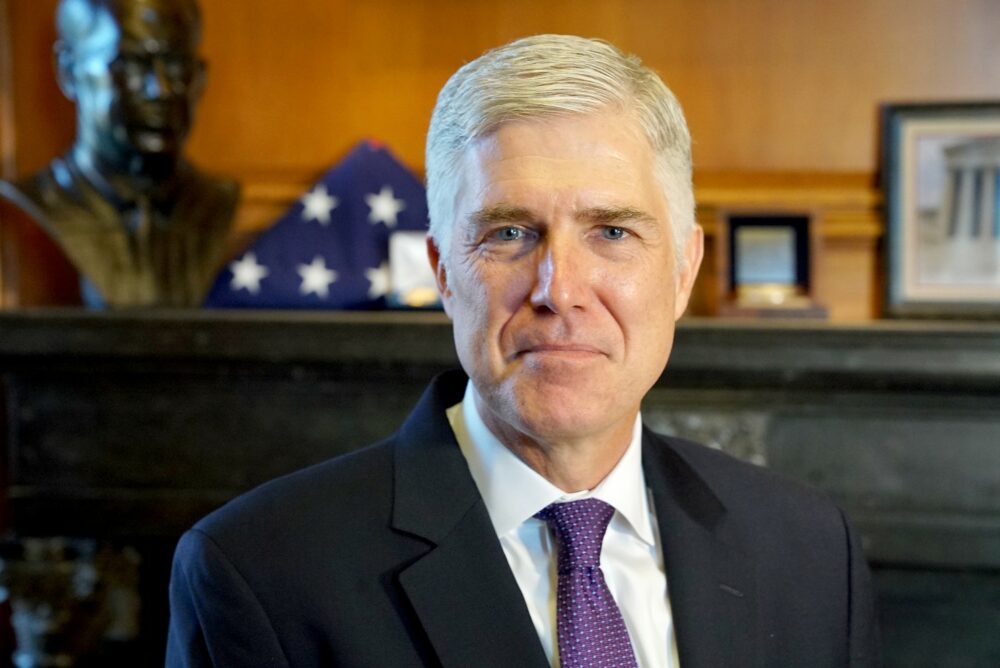
As almost everyone on the Court today recognizes, squaring the Governor’s edicts with our traditional First Amendment rules is no easy task. People may gather inside for extended periods in bus stations and airports, in laundromats and banks, in hardware stores and liquor shops. No apparent reason exists why people may not gather, subject to identical restrictions, in churches or synagogues, especially when religious institutions have made plain that they stand ready, able, and willing to follow all the safety precautions required of “essential” businesses and perhaps more besides.
The only explanation for treating religious places differently seems to be a judgment that what happens there just isn’t as “essential” as what happens in secular spaces. Indeed, the Governor is remarkably frank about this: In his judgment laundry and liquor, travel and tools, are all “essential” while traditional religious exercises are not. That is exactly the kind of discrimination the First Amendment forbids.
Nor is the problem an isolated one. In recent months, certain other Governors have issued similar edicts. At the flick of a pen, they have asserted the right to privilege restaurants, marijuana dispensaries, and casinos over churches, mosques, and temples. See Calvary Chapel Dayton Valley v. Sisolak, 591 U. S. ___, ___ (2020) (GORSUCH, J., dissenting).
In far too many places, for far too long, our first freedom has fallen on deaf ears.
*
What could justify so radical a departure from the First Amendment’s terms and long-settled rules about its application? Our colleagues offer two possible answers. Initially, some point to a solo concurrence in South Bay Pentecostal Church v. Newsom, 590 U. S. ___ (2020), in which THE CHIEF JUSTICE expressed willingness to defer to executive orders in the pandemic’s early stages based on the newness of the emergency and how little was then known about the disease. Post, at 5 (opinion of BREYER, J.). At that time, COVID had been with us, in earnest, for just three months. Now, as we round out 2020 and face the prospect of entering a second calendar year living in the pandemic’s shadow, that rationale has expired according to its own terms.
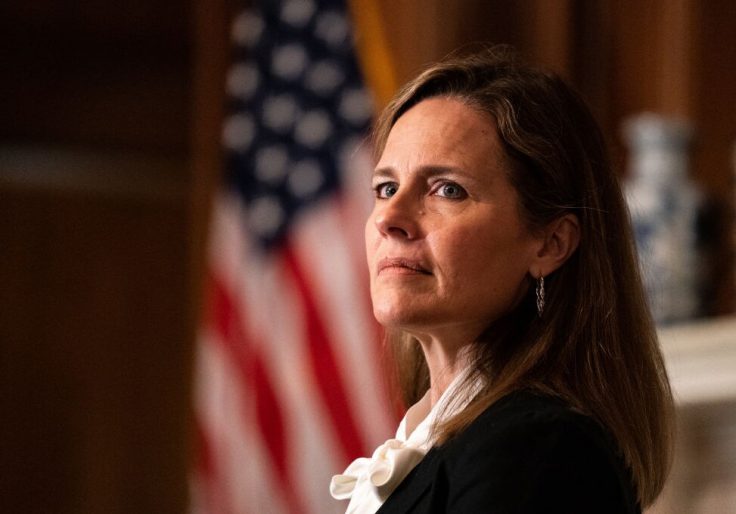
Even if the Constitution has taken a holiday during this pandemic, it cannot become a sabbatical. Rather than apply a nonbinding and expired concurrence from South Bay, courts must resume applying the Free Exercise Clause. Today, a majority of the Court makes this plain. Not only did the South Bay concurrence address different circumstances than we now face, that opinion was mistaken from the start.
To justify its result, the concurrence reached back 100 years in the U. S. Reports to grab hold of our decision in Jacobson v. Massachusetts, 197 U. S. 11 (1905). But Jacobson hardly supports cutting the Constitution loose during a pandemic. That decision involved an entirely different mode of analysis, an entirely different right, and an entirely different kind of restriction.
Start with the mode of analysis. Although Jacobson predated the modern tiers of scrutiny, this Court essentially applied rational basis review to Henning Jacobson’s challenge to a state law that, in light of an ongoing smallpox pandemic, required individuals to take a vaccine, pay a $5 fine, or establish that they qualified for an exemption. Id., at 25 (asking whether the State’s scheme was “reasonable”); id., at 27 (same); id., at 28 (same). Rational basis review is the test this Court normally applies to Fourteenth Amendment challenges, so long as they do not involve suspect classifications based on race or some other ground, or a claim of fundamental right.
Put differently, Jacobson didn’t seek to depart from normal legal rules during a pandemic, and it supplies no precedent for doing so. Instead, Jacobson applied what would become the traditional legal test associated with the right at issue—exactly what the Court does today. Here, that means strict scrutiny: The First Amendment traditionally requires a State to treat religious exercises at least as well as comparable secular activities unless it can meet the demands of strict scrutiny—showing it has employed the most narrowly tailored means available to satisfy a compelling state interest. Church of Lukumi, 508 U. S., at 546.
Next, consider the right asserted. Mr. Jacobson claimed that he possessed an implied “substantive due process” right to “bodily integrity” that emanated from the Fourteenth Amendment and allowed him to avoid not only the vaccine but also the $5 fine (about $140 today) and the need to show he qualified for an exemption. 197 U. S., at 13–14. This Court disagreed. But what does that have to do with our circumstances? Even if judges may impose emergency restrictions on rights that some of them have found hiding in the Constitution’s penumbras, it does not follow that the same fate should befall the textually explicit right to religious exercise.
Finally, consider the different nature of the restriction. In Jacobson, individuals could accept the vaccine, pay the fine, or identify a basis for exemption. Id., at 12, 14. The imposition on Mr. Jacobson’s claimed right to bodily integrity, thus, was avoidable and relatively modest. It easily survived rational basis review, and might even have survived strict scrutiny, given the opt-outs available to certain objectors. Id., at 36, 38–39.
Here, by contrast, the State has effectively sought to ban all traditional forms of worship in affected “zones” whenever the Governor decrees and for as long as he chooses. Nothing in Jacobson purported to address, let alone approve, such serious and long-lasting intrusions into settled constitutional rights. In fact, Jacobson explained that the challenged law survived only because it did not “contravene the Constitution of the United States” or “infringe any right granted or secured by that instrument.” Id., at 25.
Tellingly no Justice now disputes any of these points. Nor does any Justice seek to explain why anything other than our usual constitutional standards should apply during the current pandemic.
In fact, today the author of the South Bay concurrence even downplays the relevance of Jacobson for cases like the one before us. Post, at 2 (opinion of ROBERTS, C. J.). All this is surely a welcome development. But it would require a serious rewriting of history to suggest, as THE CHIEF JUSTICE does, that the South Bay concurrence never really relied in significant measure on Jacobson. That was the first case South Bay cited on the substantive legal question before the Court, it was the only case cited involving a pandemic, and many lower courts quite understandably read its invocation as inviting them to slacken their enforcement of constitutional liberties while COVID lingers. See, e.g., Elim Romanian Pentecostal Church v. Pritzker, 962 F. 3d 341, 347 (CA7 2020); Legacy Church, Inc. v. Kunkel, ___ F. Supp. 3d ___, ___ (NM 2020).
Why have some mistaken this Court’s modest decision in Jacobson for a towering authority that overshadows the Constitution during a pandemic? In the end, I can only surmise that much of the answer lies in a particular judicial impulse to stay out of the way in times of crisis. But if that impulse may be understandable or even admirable in other circumstances, we may not shelter in place when the Constitution is under attack. Things never go well when we do.
*
That leaves my colleagues to their second line of argument. Maybe precedent does not support the Governor’s actions. Maybe those actions do violate the Constitution. But, they say, we should stay our hand all the same. Even if the churches and synagogues before us have been subject to unconstitutional restrictions for months, it is no matter because, just the other day, the Governor changed his color code for Brooklyn and Queens where the plaintiffs are located. Now those regions are “yellow zones” and the challenged restrictions on worship associated with “orange” and “red zones” do not apply. So, the reasoning goes, we should send the plaintiffs home with an invitation to return later if need be.
To my mind, this reply only advances the case for intervention. It has taken weeks for the plaintiffs to work their way through the judicial system and bring their case to us. During all this time, they were subject to unconstitutional restrictions. Now, just as this Court was preparing to act on their applications, the Governor loosened his restrictions, all while continuing to assert the power to tighten them again anytime as conditions warrant. So if we dismissed this case, nothing would prevent the Governor from reinstating the challenged restrictions tomorrow. And by the time a new challenge might work its way to us, he could just change them again.
The Governor has fought this case at every step of the way. To turn away religious leaders bringing meritorious claims just because the Governor decided to hit the “off ” switch in the shadow of our review would be, in my view, just another sacrifice of fundamental rights in the name of judicial modesty. Even our dissenting colleagues do not suggest this case is moot or otherwise outside our power to decide. They counsel delay only because “the disease-related circumstances [are] rapidly changing.” Post, at 5 (opinion of BREYER, J.).
But look at what those “rapidly changing” circumstances suggest. Both Governor Cuomo and Mayor de Blasio have “indicated it’s only a matter of time before [all] five boroughs” of New York City are flipped from yellow to orange. J. Skolnik, D. Goldiner, & D. Slattery, Staten Island Goes ‘Orange’ As Cuomo Urges Coronavirus ‘Reality Check’ Ahead of Thanksgiving, N. Y. Daily News (Nov. 23, 2020), https://www.nydailynews.com/coronavirus/ny-coronaviruscuomo-thanksgiving-20201123-yyhxfo3kzbdinbfbsqos3tvrk u-story-html.
On anyone’s account, then, it seems inevitable this dispute will require the Court’s attention. It is easy enough to say it would be a small thing to require the parties to “refile their applications” later. Post, at 3 (opinion of BREYER, J.). But none of us are rabbis wondering whether future services will be disrupted as the High Holy Days were, or priests preparing for Christmas. Nor may we discount the burden on the faithful who have lived for months under New York’s unconstitutional regime unable to attend religious services.
Whether this Court could decide a renewed application promptly is beside the point. The parties before us have already shown their entitlement to relief. Saying so now will establish clear legal rules and enable both sides to put their energy to productive use, rather than devoting it to endless emergency litigation. Saying so now will dispel, as well, misconceptions about the role of the Constitution in times of crisis, which have already been permitted to persist for too long. It is time—past time—to make plain that, while the pandemic poses many grave challenges, there is no world in which the Constitution tolerates color-coded executive edicts that reopen liquor stores and bike shops but shutter churches, synagogues, and mosques.

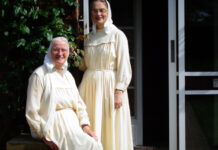
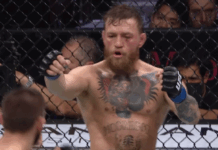
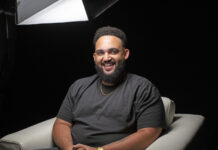
Comments are closed.